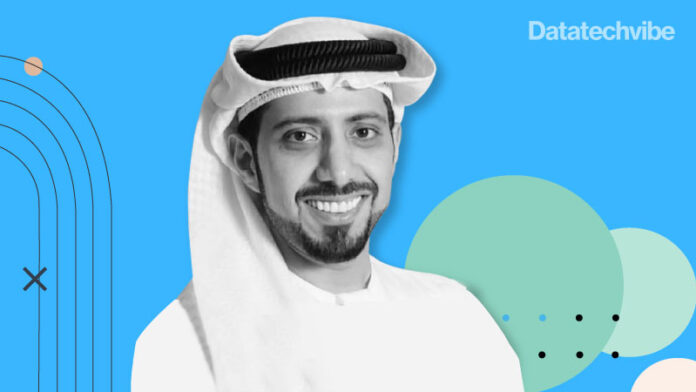The pandemic caused rapid digital transformation for many organisations, with teams and leaders embracing a raft of digital changes in a short time. A study of more than 36,200 IT professionals across 33 counties by mental wellbeing platform Yerbo found that two in five workers are at high risk of burnout, prompted by longer hours, more demanding workloads, and conflicts in work-life balance.
To avoid digital burnout, Sultan Alshaali, founding director of Government Accelerators, Prime Minister’s Office, UAE, says, “It’s essential to look at ethical values while we maintain digital competitiveness.”
Alshaali, talks about why online collaborative tools are transformational and having a common understanding of data is essential for decision making.
Excerpts from the interview:
Digital transformation is changing the way firms compete. Is it essential to maintain competitive conditions in the era of digitalisation?
When we talk about competitive conditions, it means delivering results. It’s an important aspect that needs to be maintained and revisited from time to time because of the high burnout rate. Nowadays, with digital integration, people tend to work non-stop – working from home and car. It gives the competition a new definition: is it the quantity vs. the outcome? Or is it also the quality? And how do we reduce the burnout rate?
Most people are overwhelmed with the amount of information in this digital age and the speed of transformation, while some are playing catch-up. The UAE, for example, is known for its fantastic technology infrastructure and Internet service. But during the pandemic, virtual meeting platforms were not accessible for multiple reasons. Now, it’s becoming the norm, driving competition between entities to have more meetings to drive more results. Over the past two years, employee behaviour also changed. It’s essential to look at ethical values while we maintain digital competitiveness.
Among the emerging technologies, what’s the key to digital transformation success?
There are a lot of emerging technologies that many public sector and private sector enterprises are not aware of or how they can apply those. One of the technologies that transformed employee engagement is the online collaborative tools. Although different vendors provide collaborative tools, many organisations are developing their internal platforms to enable what can be done in a physical workshop can also be done virtually.
And this has two significant aspects: first, the collaborative approach brings stakeholders together, and second, the most important part is digital literacy. Every individual you’re dealing with is tech-savvy; some are more knowledgeable about the different platforms, the IT infrastructure, and how to utilise those technologies and tools. Others are still working with basic applications. Collaborative tools are transformational, as it helps create common grounds between people of different backgrounds and sectors sharing knowledge.
While taking up new projects, is it vital to consider sustainability and scalability?
I’d say 100 per cent! For entities to work on a project, not knowing if it will be sustained or scaled is de-motivating for the team. When a business is established, it brings the team together to see the bigger picture. They understand that they are laying a foundation for something that will survive for a long time. Businesses need to have a vision to see how they can scale a project within the same scope or in different areas. This will help a project to develop further. The sustainability and scalability of a project are the most important aspects that require attention from the beginning. Otherwise, the project might get killed immediately after completion.
To accelerate the delivery of strategic programs or develop policies, why is it essential to understand data?
We live in an age where abundant amounts of information are readily available. It’s important to identify the data you’re working with and understand it. Here’s an example: When the European Union was coming together, we led a manufacturing company and sourced raw materials from the US and Europe. Because of the currency fluctuation at that time, certain decisions required an understanding of the data. Is it more cost-efficient to buy all the resources from Europe or the US? The priority was also the delivery time because shipping from the US takes longer, which affects the overall production and the bottom line. After data was analysed from a costing and procurement perspective, the decision had to be taken.
Bringing data together and ensuring a common understanding of data is vital for the decision-makers to ensure tangible results. You risk getting confused and losing momentum if you do not look at the data correctly.
If you liked reading this, you might like our other stories
How Can Enterprise SOC Efficiency Be Improved?
Can Project BigScience Leverage Large Language Models?









